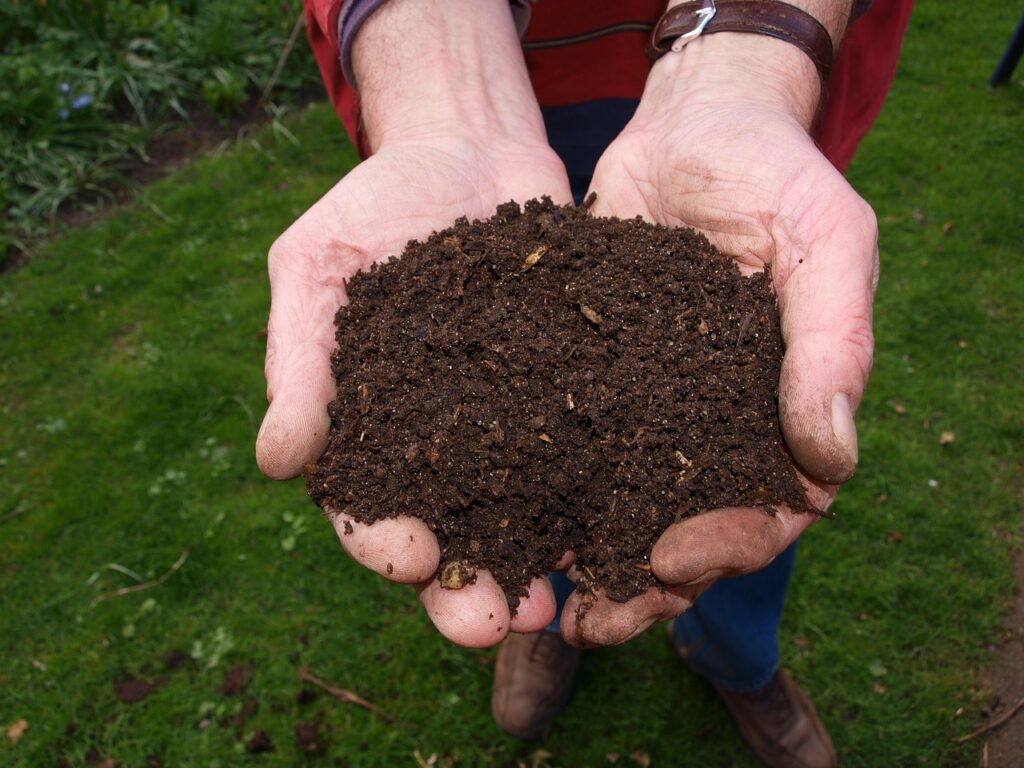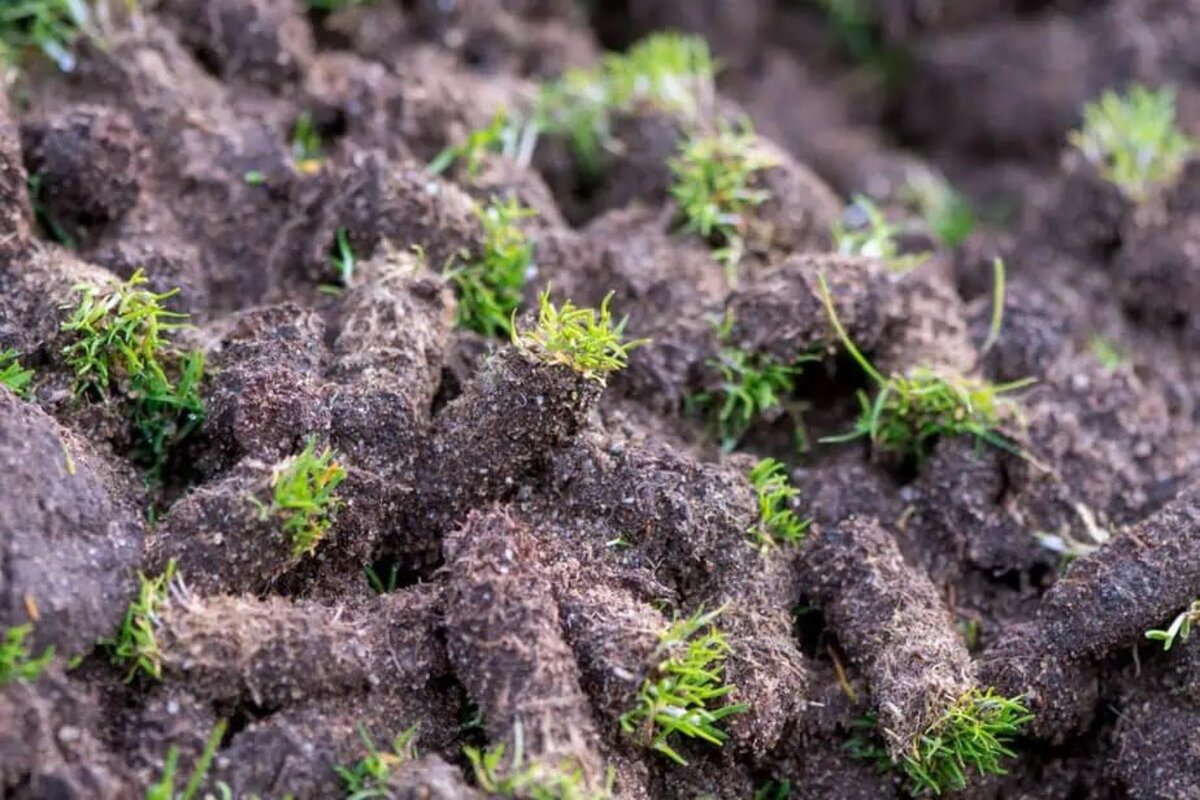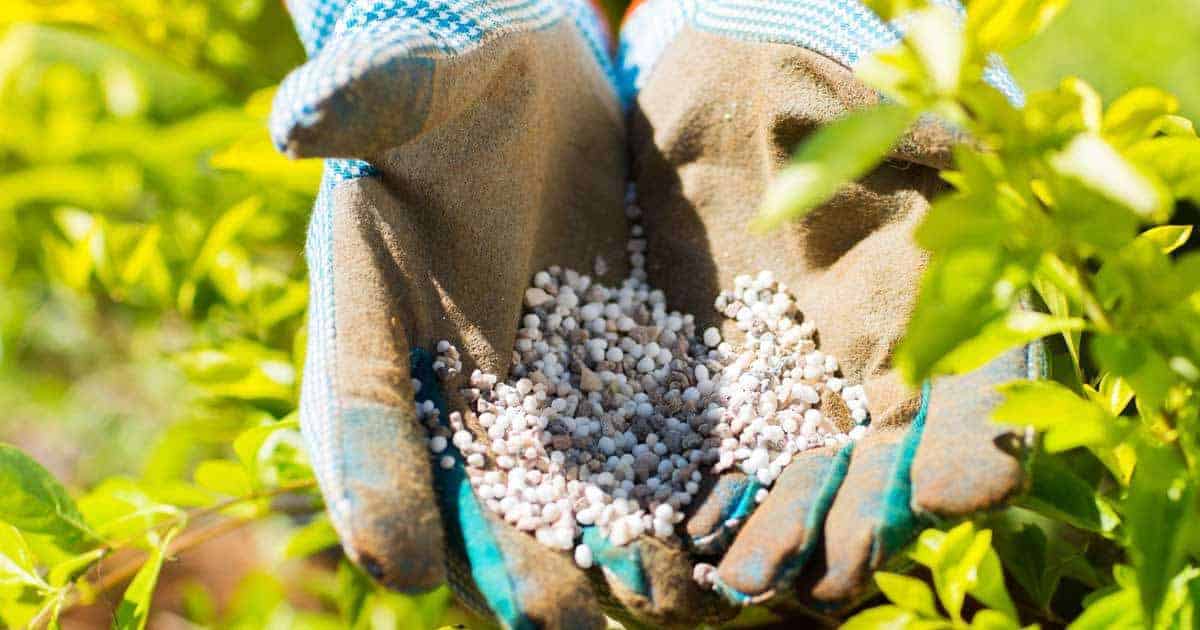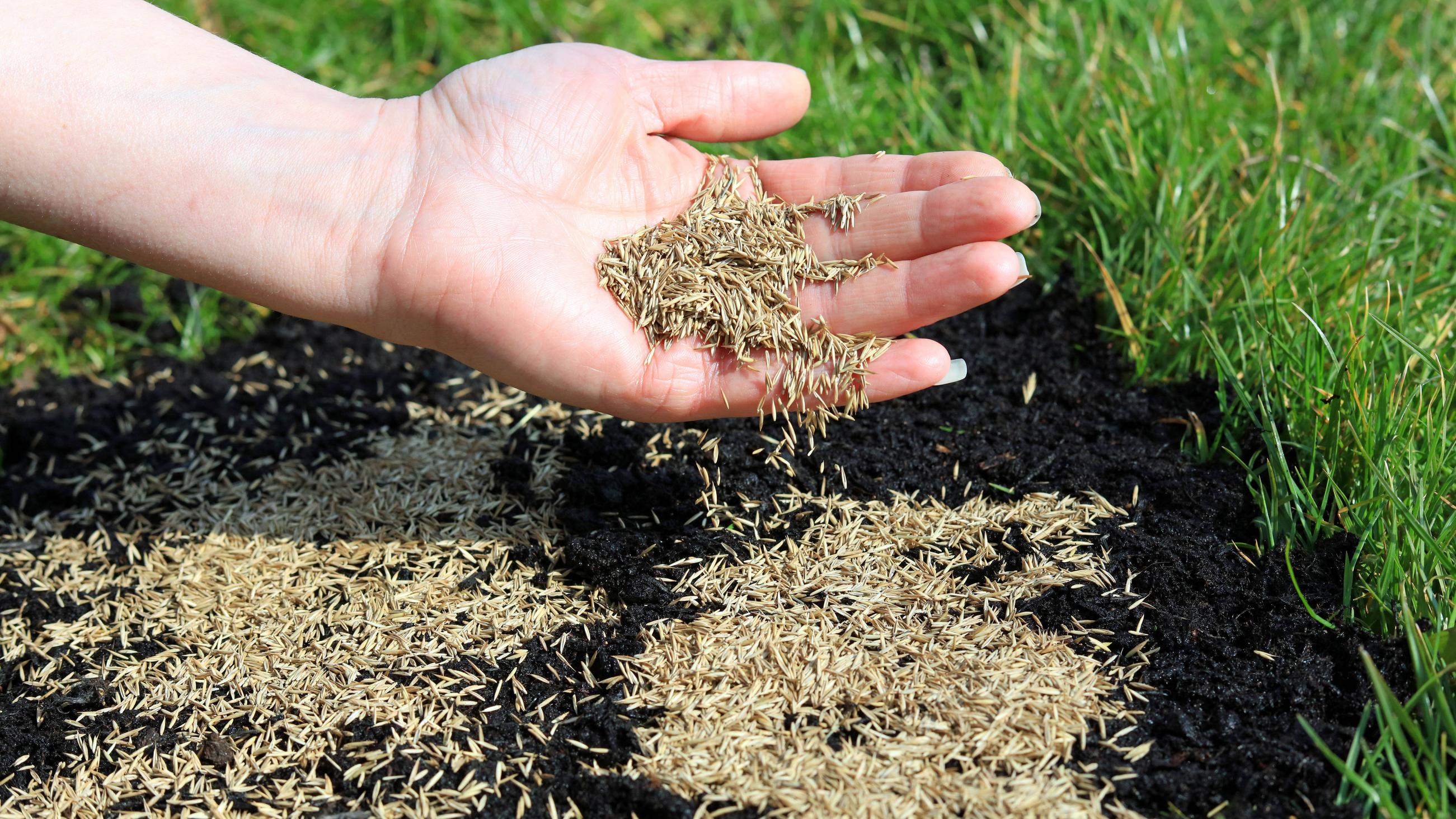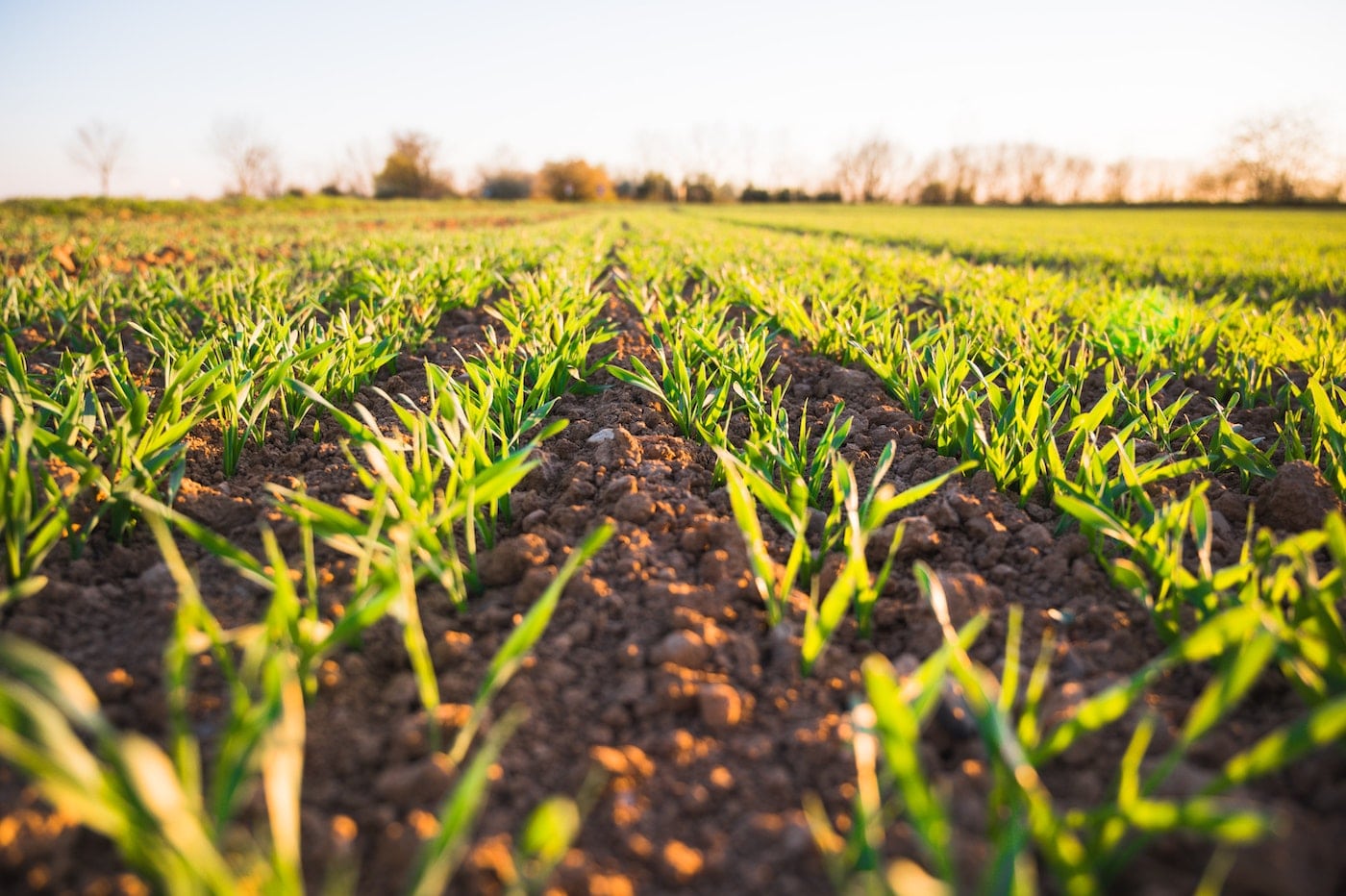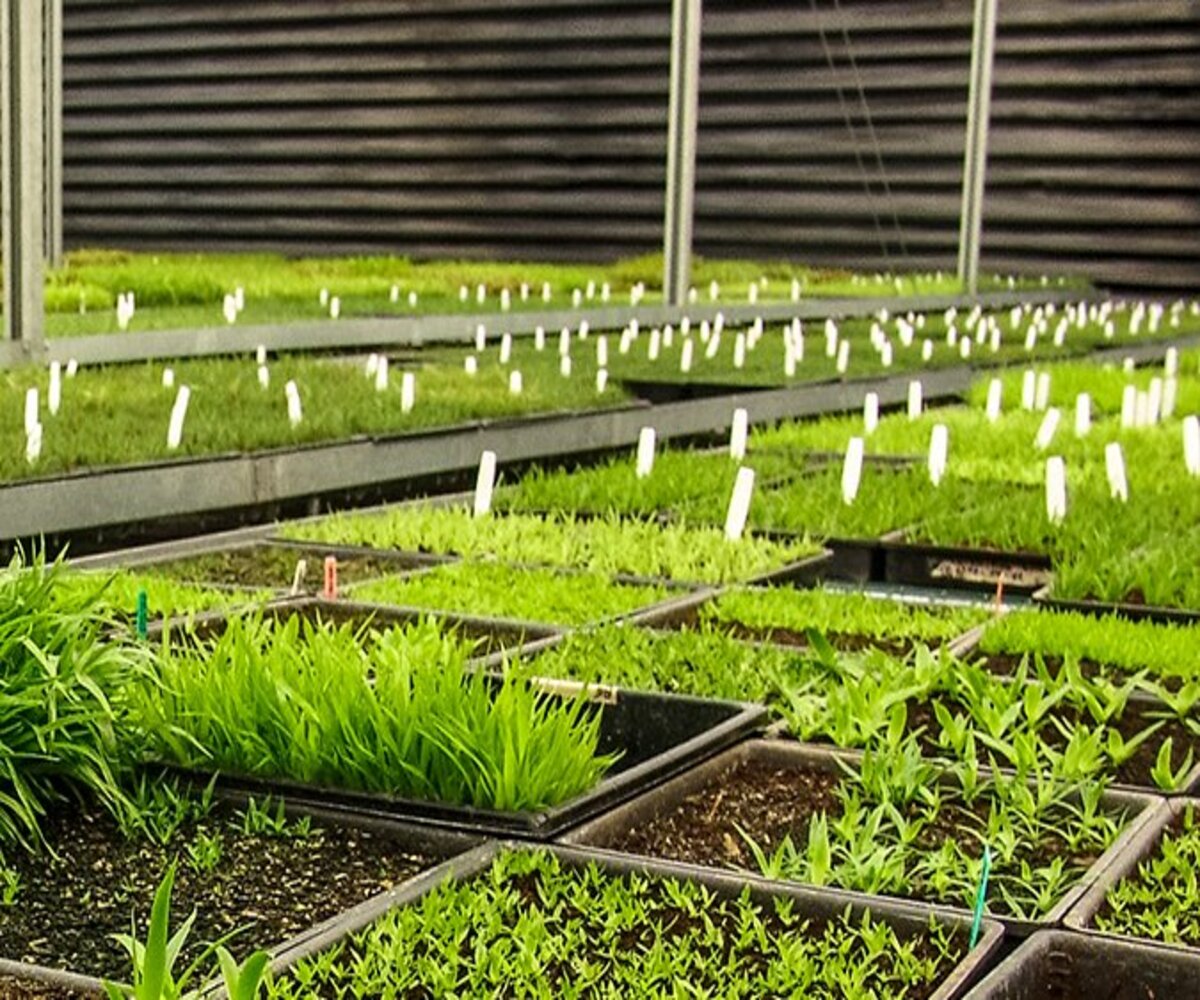Home>Types of Gardening>Edible Gardening>What Fertilizer To Use On Turnips


Edible Gardening
What Fertilizer To Use On Turnips
Modified: January 22, 2024
Discover the best fertilizer for turnips in your edible gardening journey. Optimize yields and nourish your crops with expert-recommended solutions.
(Many of the links in this article redirect to a specific reviewed product. Your purchase of these products through affiliate links helps to generate commission for Chicagolandgardening.com, at no extra cost. Learn more)
Table of Contents
Introduction
Welcome to the world of edible gardening! Nothing beats the satisfaction of growing your own fresh vegetables, and one of the most rewarding crops to grow is turnips. Whether you are a seasoned gardener or just starting out, understanding the basics of fertilizing turnips is essential for a successful harvest.
Turnips are cool-season root vegetables that thrive in rich, well-drained soil. They are packed with nutrients, easy to grow, and can be enjoyed in a variety of culinary dishes. However, to achieve optimal growth and produce healthy, flavorful turnips, proper fertilization is key.
In this article, we will explore the importance of fertilizing turnips, the factors to consider when choosing fertilizer, and provide tips for timing and application. Whether you prefer organic or chemical fertilizers, we have you covered!
Before we dive into the details, it’s important to note that fertilizing turnips is not a one-size-fits-all approach. Factors such as soil type, nutrient levels, and growing conditions can vary from garden to garden. However, by following some general guidelines and understanding the needs of your specific turnip plants, you can tailor your fertilizer regimen to achieve impressive results.
So, roll up your sleeves, grab your gardening tools, and let’s dig into the wonderful world of turnip fertilization!
Importance of Fertilizing Turnips
Fertilizing turnips is crucial for promoting healthy plant growth, ensuring optimal nutrient uptake, and maximizing yield. Here’s why fertilization is so essential:
- Supplying Essential Nutrients: Turnips, like all plants, require a balanced supply of nutrients to thrive. Fertilizers provide these essential elements, such as nitrogen (N), phosphorus (P), and potassium (K), as well as secondary nutrients like calcium, magnesium, and sulfur. Adequate nutrient levels are crucial for strong root development, leaf production, and the formation of plump turnip bulbs.
- Correcting Nutrient Deficiencies: Soil nutrient levels can vary, and deficiencies can occur. Fertilizers help correct nutrient imbalances and provide the necessary elements that may be lacking in the soil. By supplying the right blend of nutrients, fertilizers ensure that turnips have access to all the building blocks they need for healthy growth and vibrant foliage.
- Promoting Optimal Plant Health: Healthy plants are more resistant to pests and diseases. By supplying essential nutrients, fertilizers help strengthen turnip plants, making them less susceptible to common issues that can hinder growth and reduce yield. Robust plants are better equipped to handle environmental stressors, leading to an overall healthier and more productive garden.
- Enhancing Flavor and Nutritional Value: Properly fertilized turnips not only yield more, but they also taste better. Balanced nutrition helps develop the natural sugars and flavors in turnip roots, resulting in a more delicious harvest. In addition, nutrient-rich turnips offer higher nutritional value, ensuring you get the best out of your homegrown produce.
Now that we understand the significance of fertilizing turnips, let’s explore the various factors to consider when choosing the right fertilizer for your turnip crops.
Factors to Consider when Choosing Fertilizer for Turnips
Choosing the right fertilizer for your turnips requires considering several key factors. By understanding these factors, you can make an informed decision and provide your turnip plants with the nutrients they need. Here are the main factors to consider:
- Nutrient Composition: Look for fertilizers that have a balanced nutrient composition, with a ratio ideal for root development and bulb formation. A general recommendation for turnips is a fertilizer with an N-P-K ratio of 10-10-10 or similar.
- Organic vs. Chemical Fertilizers: Decide whether you prefer to use organic or chemical fertilizers. Organic fertilizers, derived from natural materials such as compost, manure, or fish emulsion, provide slow-release nutrients and improve soil health over time. Chemical fertilizers, on the other hand, offer precise nutrient control and rapid absorption.
- Soil Test Results: Conduct a soil test to determine the current nutrient levels in your soil. This will help you identify any deficiencies or excesses, allowing you to select a fertilizer that addresses specific needs. Soil tests are typically available through local agricultural extension offices.
- Soil pH: Consider your soil’s pH level, as it affects nutrient availability to plants. Turnips prefer a slightly acidic to neutral pH range of 6.0 to 7.0. If your soil pH is outside this range, you may need to amend it using lime to raise pH or sulfur to lower pH, before applying fertilizers.
- Sustainability and Environmental Impact: If sustainability is a priority for you, opt for organic fertilizers or slow-release fertilizers that minimize leaching and runoff. These options are better for the environment and reduce the risk of contaminating water sources.
- Application Method: Consider whether you prefer granular or liquid fertilizers. Granular fertilizers are typically applied prior to planting, while liquid fertilizers can be used as foliar sprays or added to irrigation systems for easy absorption by plants.
- Budget and Availability: Take into account the cost and availability of the chosen fertilizer. Check local garden centers, nurseries, or online suppliers to ensure the fertilizer you need is readily available and fits within your budget.
By considering these factors, you can select the most appropriate fertilizer for your turnips. In the next sections, we will explore both organic and chemical fertilizer options in more detail.
Organic Fertilizers for Turnips
If you prefer an organic approach to fertilizing your turnips, there are several options that can provide the necessary nutrients while improving soil health. Here are some popular organic fertilizers for turnips:
- Compost: Compost is a fantastic organic fertilizer that helps enrich the soil with a wide range of nutrients. It improves soil structure, retains moisture, and promotes beneficial microbial activity. Apply a layer of compost around turnip plants, ensuring it doesn’t touch the stems.
- Manure: Well-rotted animal manure, such as cow or horse manure, is a rich source of nitrogen and other essential nutrients. It can be used as a topdressing or mixed into the soil prior to planting. Make sure to use aged manure to avoid burning the turnip roots.
- Bone Meal: Bone meal is derived from crushed animal bones and is high in phosphorus, which promotes root development. It is typically applied at planting time and can be incorporated into the soil or sprinkled around the base of turnip plants.
- Fish Emulsion: Fish emulsion is made from fish waste and is a highly nutritious organic fertilizer. It is rich in nitrogen, a vital nutrient for vegetative growth. Dilute fish emulsion with water and apply as a foliar spray or use it as a soil drench around turnip plants.
- Seaweed Extract: Seaweed extract is a natural fertilizer that enhances plant growth and improves overall plant health. It contains trace minerals, growth hormones, and beneficial bacteria. Apply as a foliar spray or mix it with water and use it to water the turnip plants.
- Coffee Grounds: Coffee grounds are a readily available organic fertilizer that adds nitrogen to the soil. Sprinkle coffee grounds around turnip plants and gently work them into the soil. They can also deter certain pests like slugs and snails.
When using organic fertilizers, it’s important to follow the recommended application rates and avoid over-fertilizing, as excessive nutrients can cause nutrient imbalances or leach into the environment. Organic fertilizers provide slow-release nutrients, so they may need to be applied more frequently compared to chemical fertilizers.
Now that we’ve explored organic options, let’s delve into chemical fertilizers for turnips and how they can benefit your garden.
Chemical Fertilizers for Turnips
If you prefer the precision and convenience of chemical fertilizers, there are several options available that can provide targeted and fast-acting nutrients for your turnips. Here are some common chemical fertilizers used for turnips:
- Nitrogen-Phosphorus-Potassium (NPK) Fertilizers: NPK fertilizers are synthetic fertilizers that contain varying ratios of nitrogen, phosphorus, and potassium. They are available in granular or liquid form and provide precise nutrient control. Look for a balanced N-P-K ratio, such as 10-10-10 or 20-20-20, suitable for turnips.
- Water-Soluble Fertilizers: Water-soluble fertilizers are concentrated powders or granules that dissolve easily in water. They are applied through irrigation systems or as foliar sprays. These fertilizers deliver nutrients directly to the plant roots or leaves, promoting rapid absorption and growth.
- Slow-Release Fertilizers: Slow-release fertilizers provide a steady supply of nutrients over an extended period. They are often coated or encapsulated, allowing the nutrients to release gradually as the coating breaks down. Slow-release fertilizers are convenient, as they reduce the frequency of applications.
- Foliar Fertilizers: Foliar fertilizers are applied as sprays directly to the leaves of the plant. They are quickly absorbed by the foliage, bypassing the soil and delivering nutrients directly to the plant. Foliar fertilizers are useful for providing immediate nutrient boosts or correcting deficiencies.
- Micronutrient Fertilizers: Micronutrient fertilizers contain trace elements like iron, zinc, manganese, and boron, which are essential for plant growth in small quantities. These fertilizers are often used when soil tests indicate specific micronutrient deficiencies.
- Controlled-Release Fertilizers: Controlled-release fertilizers are designed to release nutrients gradually, based on temperature, moisture, and microbial activity. They provide nutrients over an extended period, reducing the risk of nutrient leaching and preventing excessive nutrient availability.
When using chemical fertilizers, carefully follow the manufacturer’s instructions regarding dosage, application methods, and safety precautions. It’s important to avoid over-application, as it can lead to nutrient imbalances or burn the turnip plants.
Now that we’ve explored both organic and chemical fertilizer options, let’s move on to understanding the timing and application strategies for fertilizing turnips.
Timing and Application of Fertilizer for Turnips
Proper timing and application of fertilizer is crucial to ensure that turnips receive the nutrients they need at the right stages of growth. Here are some guidelines to follow when fertilizing turnips:
- Pre-Planting: Before planting turnip seeds or seedlings, incorporate a balanced fertilizer into the soil according to the recommended application rate on the fertilizer package. This helps provide initial nutrients for healthy root development and early growth.
- Side-Dressing: As turnip plants grow, they benefit from side-dressing or top-dressing with additional fertilizer. Apply granular fertilizer around the base of the plants, keeping it several inches away from the stems. Mix the fertilizer into the top inch of soil and water thoroughly.
- Additional Applications: Depending on the variety and growth rate of your turnips, additional fertilizer applications may be necessary during the growing season. Monitor the plants and look for signs of nutrient deficiency, such as yellowing leaves or stunted growth. If needed, follow the fertilizer’s instructions for the correct dosage and application method.
- Foliar Feeding: Foliar feeding can provide a quick nutrient boost when turnips show signs of nutrient deficiencies or slow growth. Dilute a water-soluble fertilizer according to the package instructions and apply it as a spray, covering the leaves thoroughly. Applying during the early morning or late afternoon is best to avoid leaf burn and maximize absorption.
- Watering After Application: After applying fertilizer, water the turnip plants well to ensure the nutrients are absorbed into the soil and taken up by the roots. This will help prevent nutrient leaching and ensure efficient nutrient uptake.
It’s important to closely follow the instructions on the fertilizer packaging regarding the recommended application rates and frequency. Over-fertilizing can lead to nutrient burn or excessive vegetative growth at the expense of root development and bulb formation.
By adhering to these guidelines and monitoring the health and growth of your turnip plants, you can provide the ideal amount of nutrients at each stage, resulting in robust and productive turnip crops.
Next, we’ll provide some additional tips to help you achieve optimal turnip growth and a bountiful harvest.
Additional Tips for Optimal Turnip Growth
To ensure optimal turnip growth and a bountiful harvest, consider the following tips and best practices:
- Proper Spacing: Plant turnip seeds or seedlings at the recommended spacing to allow for adequate air circulation and root development. Crowded plants may compete for nutrients and result in smaller-sized turnips.
- Regular Watering: Keep the soil consistently moist by watering your turnip plants regularly. Providing about 1 inch of water per week, either through rainfall or irrigation, is generally sufficient. Avoid overwatering, as it can lead to waterlogged soil or root rot.
- Weed Control: Keep the planting area free from weeds, as they can compete with turnip plants for nutrients, water, and sunlight. Mulching around the base of plants can help suppress weed growth and conserve soil moisture.
- Pest and Disease Management: Monitor your turnip plants for common pests, such as flea beetles and aphids. Use organic or chemical pest control methods as needed. Additionally, practicing crop rotation and maintaining good garden hygiene can help prevent the spread of diseases.
- Harvesting at the Right Time: Harvest turnips when they reach their desired size, typically when the roots are about 2 to 3 inches in diameter. Younger turnips tend to be more tender and flavorful. Harvest promptly to ensure the best quality and prevent the turnips from becoming woody or pithy.
- Rotate Crops: Avoid planting turnips in the same location year after year. Crop rotation helps prevent soil-borne diseases and minimizes nutrient depletion. Rotate turnips with other vegetable crops, such as legumes or leafy greens, to maintain soil health and fertility.
- Maintain Soil Health: Prioritize soil health by regularly adding organic matter, such as compost or aged manure, to improve soil fertility and structure. This helps provide a favorable environment for turnip growth and enhances nutrient availability.
- Monitor Nutrient Levels: Continuously monitor soil nutrient levels with regular soil testing. This will help you determine if any adjustments or additional fertilization are needed to ensure optimal nutrient availability for turnip plants.
By implementing these tips, you can support the overall health and productivity of your turnip plants. Remember to adapt your practices based on your specific growing conditions and the needs of your turnip varieties.
As you put these tips into action, you’ll be rewarded with a flourishing turnip garden and the satisfaction of growing your own delicious and nutritious vegetables.
Now that you’re equipped with knowledge on fertilizing turnips and optimizing their growth, it’s time to get out there and start cultivating your edible garden masterpiece!
Conclusion
Congratulations! You are now armed with the knowledge and insights needed to successfully fertilize and grow turnips in your edible garden. By understanding the importance of fertilizing turnips, considering factors when choosing the right fertilizer, utilizing organic and chemical fertilizers, applying them at the right time, and implementing additional tips for optimal growth, you can cultivate a thriving turnip crop.
Remember, turnips thrive in rich, well-drained soil and benefit from a balanced supply of nutrients. Organic fertilizers, such as compost, manure, and fish emulsion, nourish the soil and provide slow-release nutrients over time. Chemical fertilizers offer precise control and fast-acting nutrients, making them a convenient choice for many gardeners.
Timing and application are important aspects of turnip cultivation. Pre-planting fertilization sets the stage for healthy root development, while side-dressing and additional applications provide ongoing nutrition throughout the growing season. Additionally, regular watering, weed control, pest and disease management, and proper harvesting contribute to the overall success of your turnip crop.
As with any gardening endeavor, it’s important to adapt your practices to suit your specific growing conditions and the unique needs of your turnip plants. Regular soil testing, observing plant health, and making necessary adjustments will help you achieve the best results.
Now, roll up your sleeves, grab your gardening tools, and embark on the exciting journey of growing your own mouthwatering turnips. With the right fertilization techniques, patience, and care, you’ll soon be enjoying the fruits (or rather, the turnips!) of your labor.
Happy gardening, and may your turnips thrive and provide you with an abundant and flavorful harvest!
